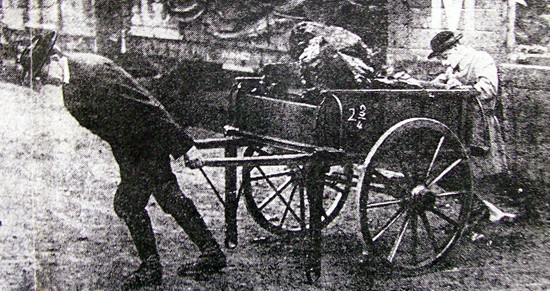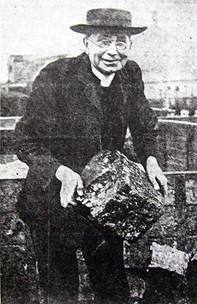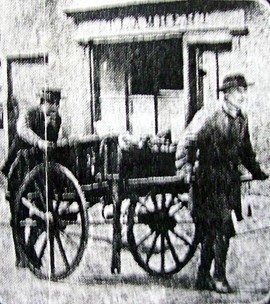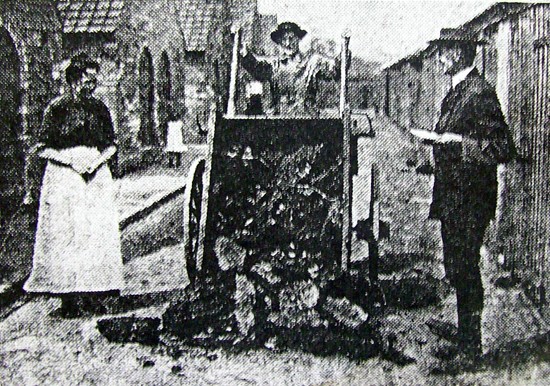|
The vicar and his curate lend a hand
CLERGYMEN WORK AS COAL CARTERS Manpower in England was short during the First World War of 1914-18 because so many able bodied men had either volunteered or been conscripted for military service and sent to the front line in France. But life continued much as before with others doing the available work although for some, this meant tackling jobs that were strange and even arduous from the usual daily round. The main source of power for heating in the home, shops and offices was coal which was brought into Bourne by rail and unloaded in the goods yards at the station which was then situated alongside the Red Hall in South Street. Coal merchants made house deliveries by horse and cart when they had the time although it was often dumped at a central point and customers collected their own as best they could but in the spring of 1916 when there was a severe shortage of labour, the vicar of Bourne and his curate offered to lend a hand. The incumbent at that time was the Rev Harry Cotton Smith who held office from 1913-19 and he was also on the management committee of a local club. But when a truck load of coal arrived at the station on Friday 7th May for the clubhouse he was not only faced with a shortage of labour but he also had difficulty in finding anyone to undertake the cartage, the usual carrier also being employed on the land, an example of the jingoistic slogan of the time that everyone was “doing their bit” to aid the war effort. The vicar and the curate, the Rev D H Henderson, assisted by the verger, Mr Moisey, therefore borrowed a handcart and set to shifting the coal themselves, all five tons of it, despite dire warnings from their friends that not only was the handcart heavy and cumbersome but they were also unused to physical labour and would suffer the consequences through aching backs and limbs for many days afterwards. The work was hard but they tackled it with gusto although the job took them two days but they continued undeterred despite getting soaked to the skin in a heavy downpour of rain. When they finished their own consignment to the clubhouse, the intrepid deliverymen then answered calls for help from several elderly parishioners who had run out of coal and delivered another half a dozen hundredweight, being rewarded by one of them with a cauliflower as a tip for their efforts. The clergymen's good deed was duly reported by the Stamford Mercury on Friday 12th May and then picked up by the London Daily Mirror whose news editor sent a reporter and photographer by train to Bourne to tell the tale and a photo feature subsequently appeared in the newspaper on 30th May 1916 under the headline “Clergymen work as coal carters” and the caption: “The handcart was heavy, but the prophets were wrong. The reverend gentlemen were not stiff.” The photographs showed the vicar and the curate loading up their handcart at the railway sidings and then pulling it down North Street to make a delivery and another showing them unloading a consignment of coal in the backyard of a grateful housewife. Two local lads who were serving with the Royal Artillery in France were particularly amused by the incident. Gunners Charles and Edward Garfoot read about it in the Stamford Mercury which was sent out regularly by their mother, Mrs Garfoot, of Woodview, Bourne, and they wrote home on Friday 14th July: “We are both in the best of health and spirits and we are pleased to see that the vicar and his curate are doing their bit.”
Go to: Main Index Villages Index
|
||||



